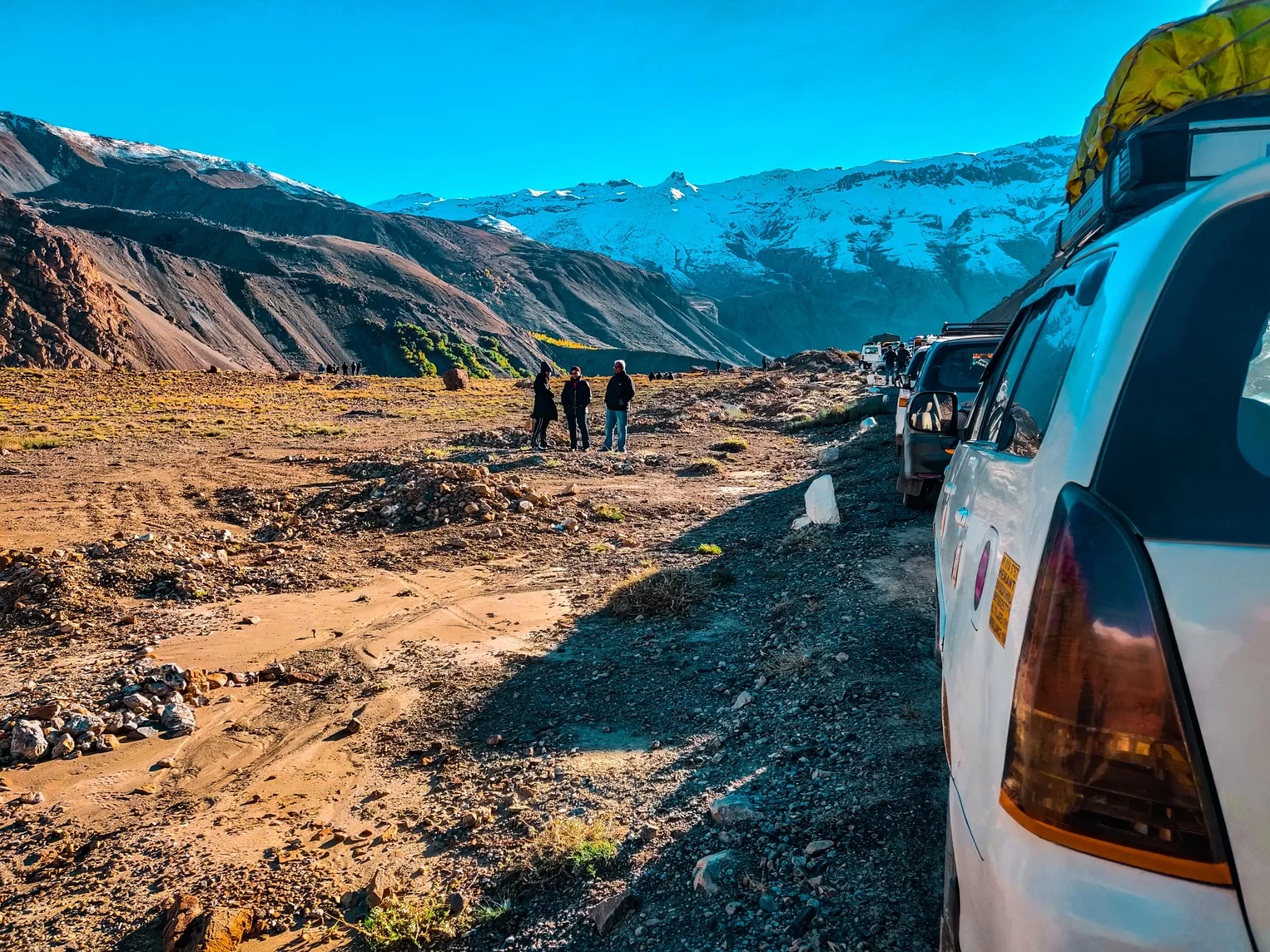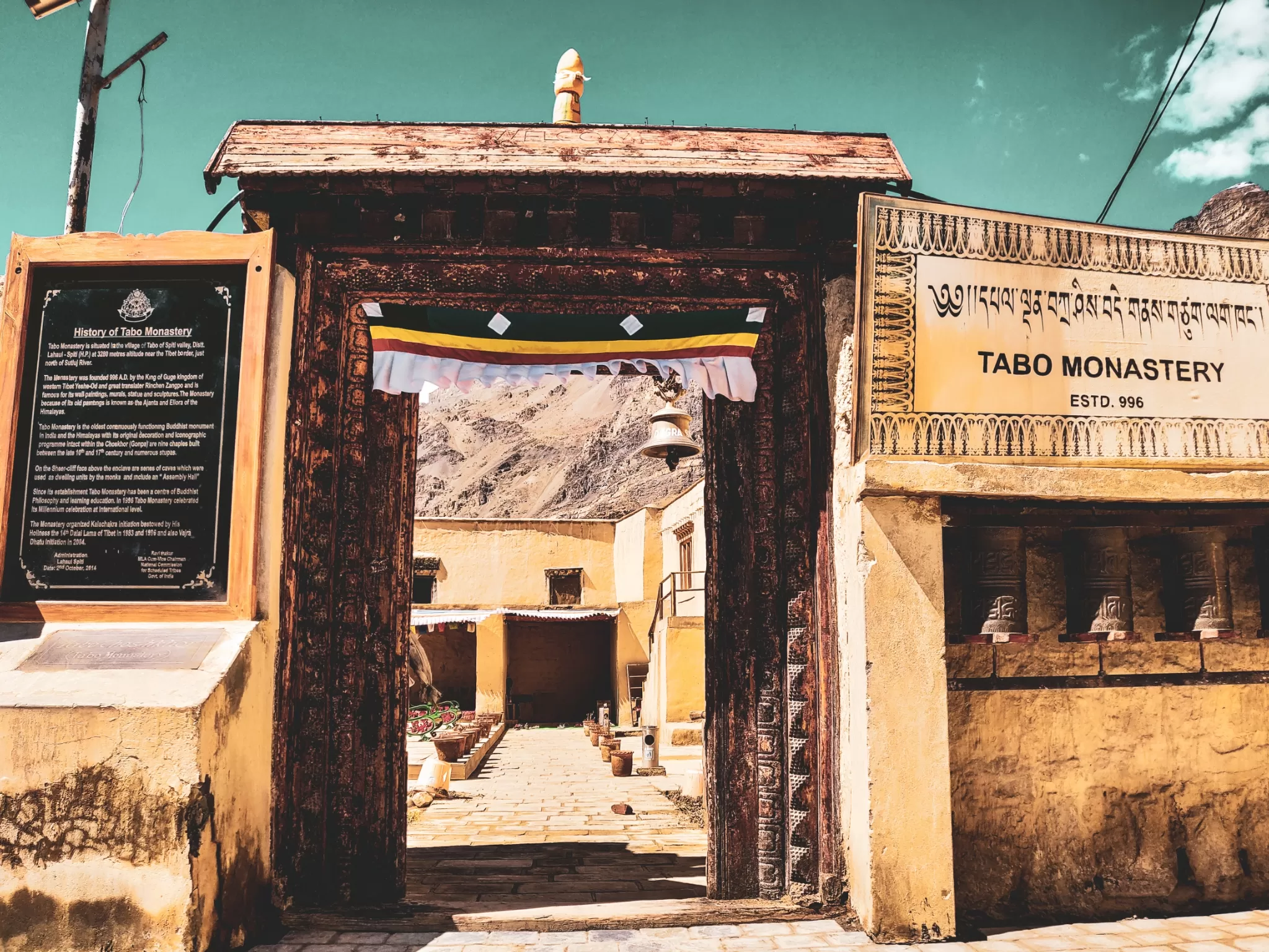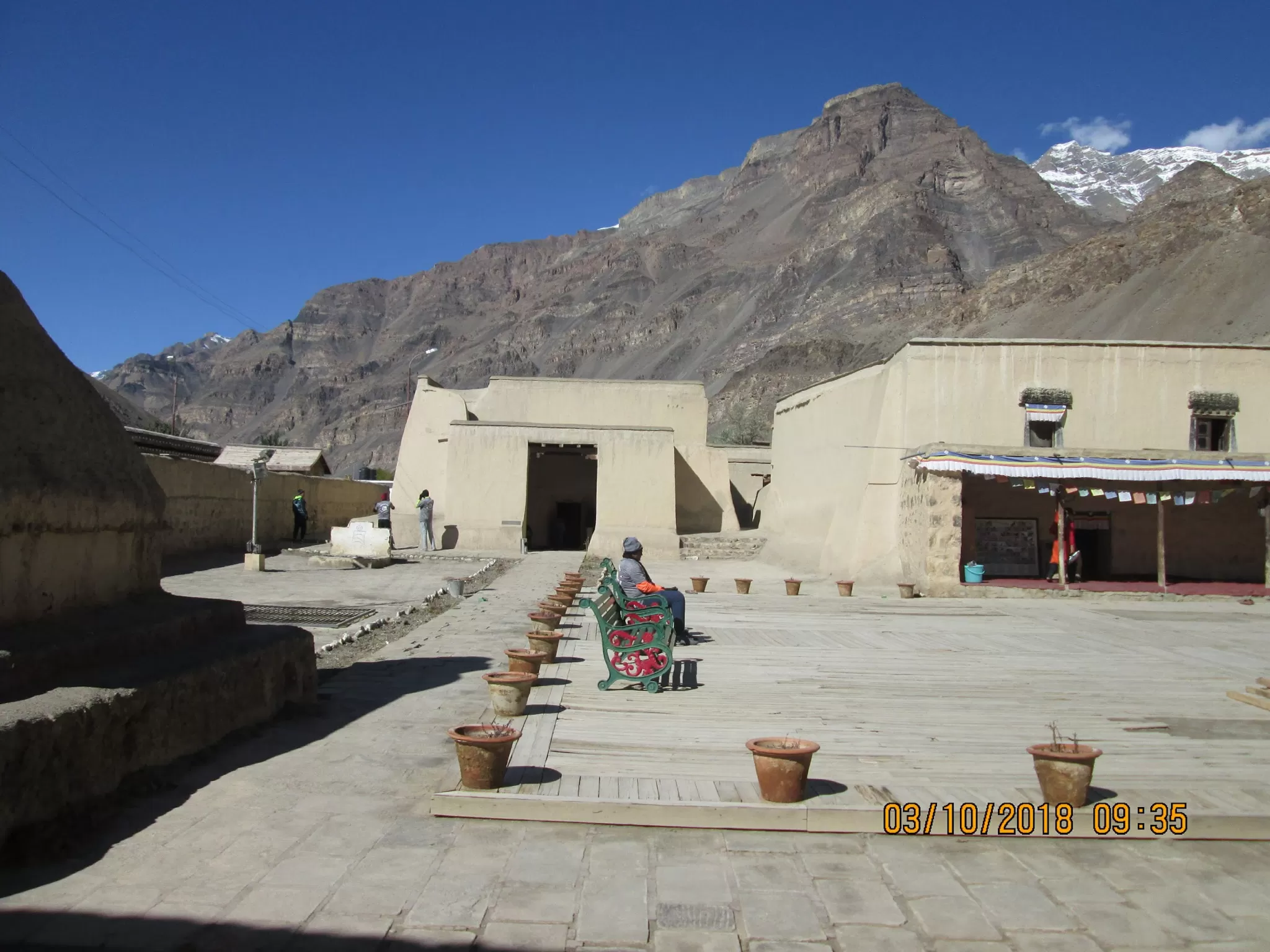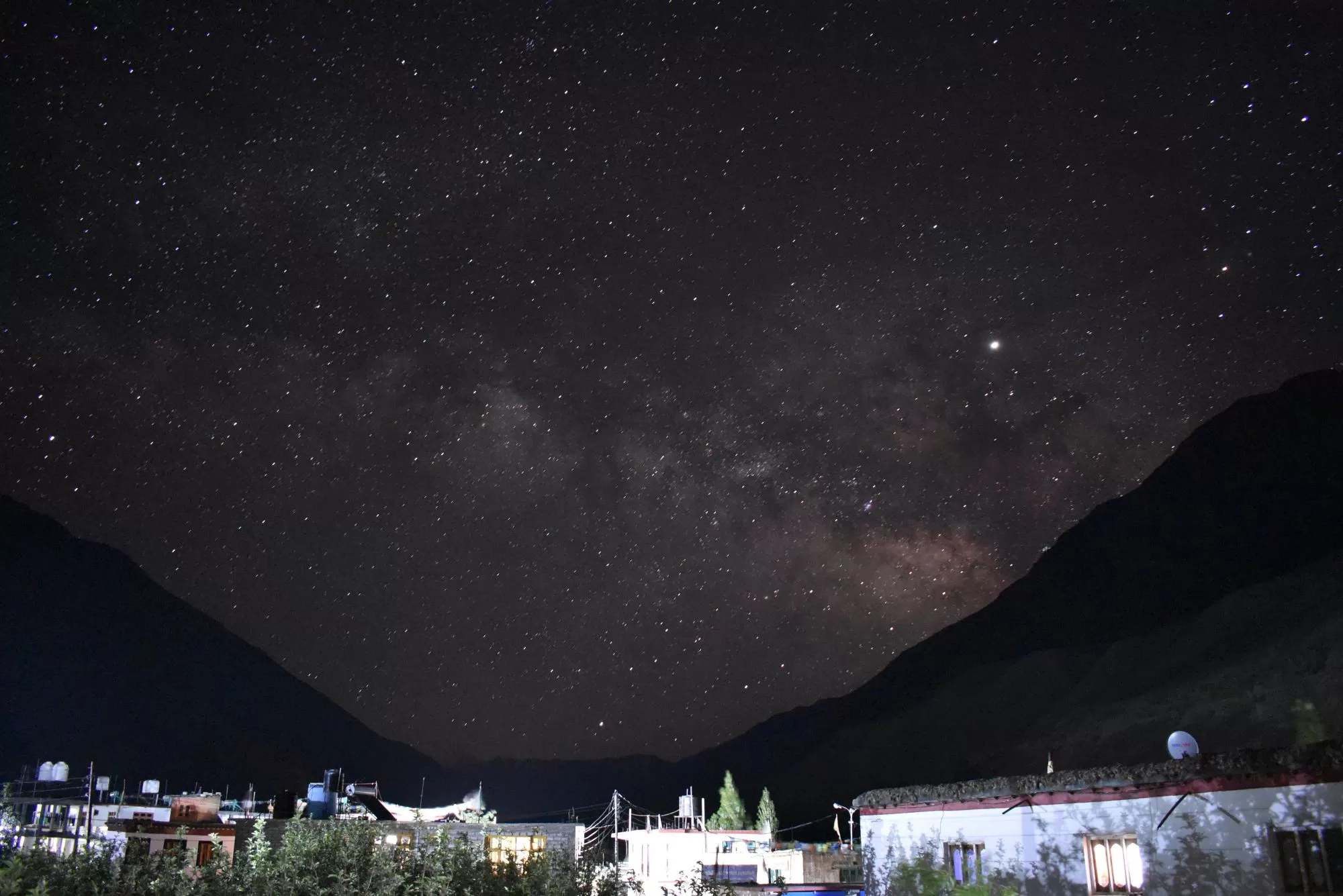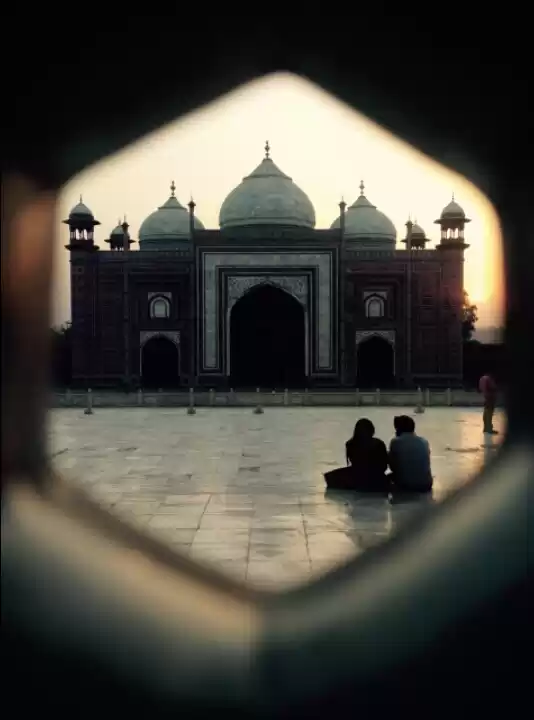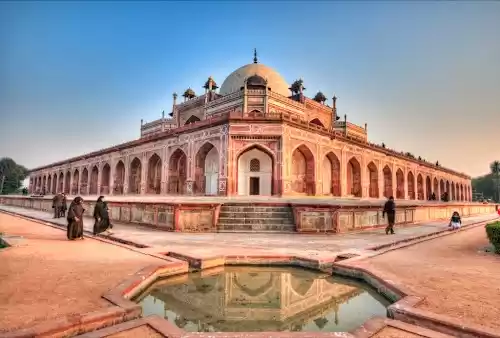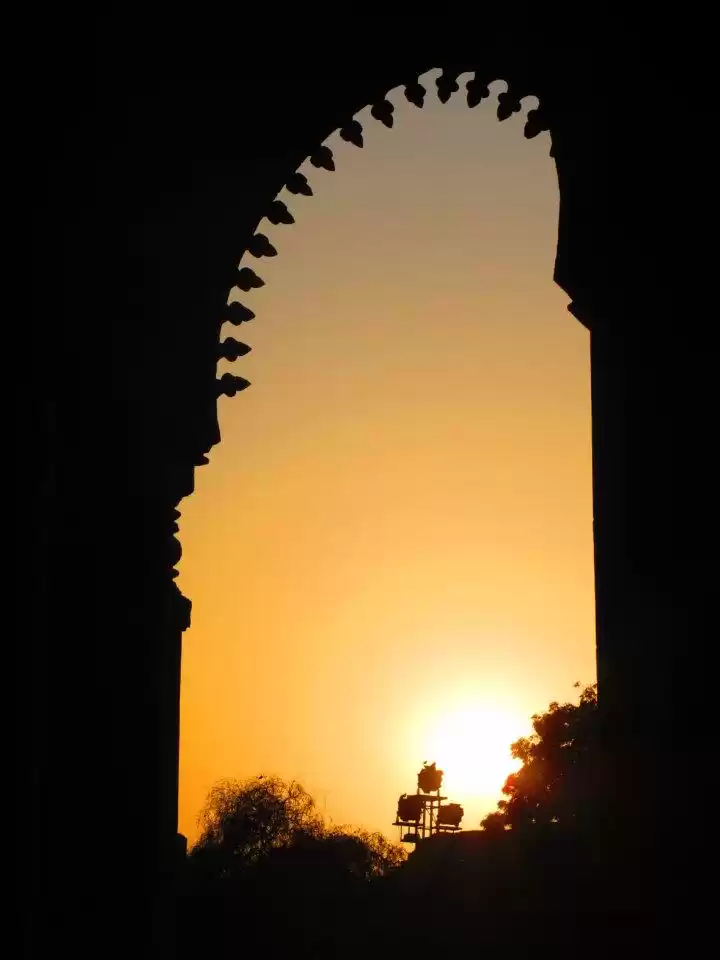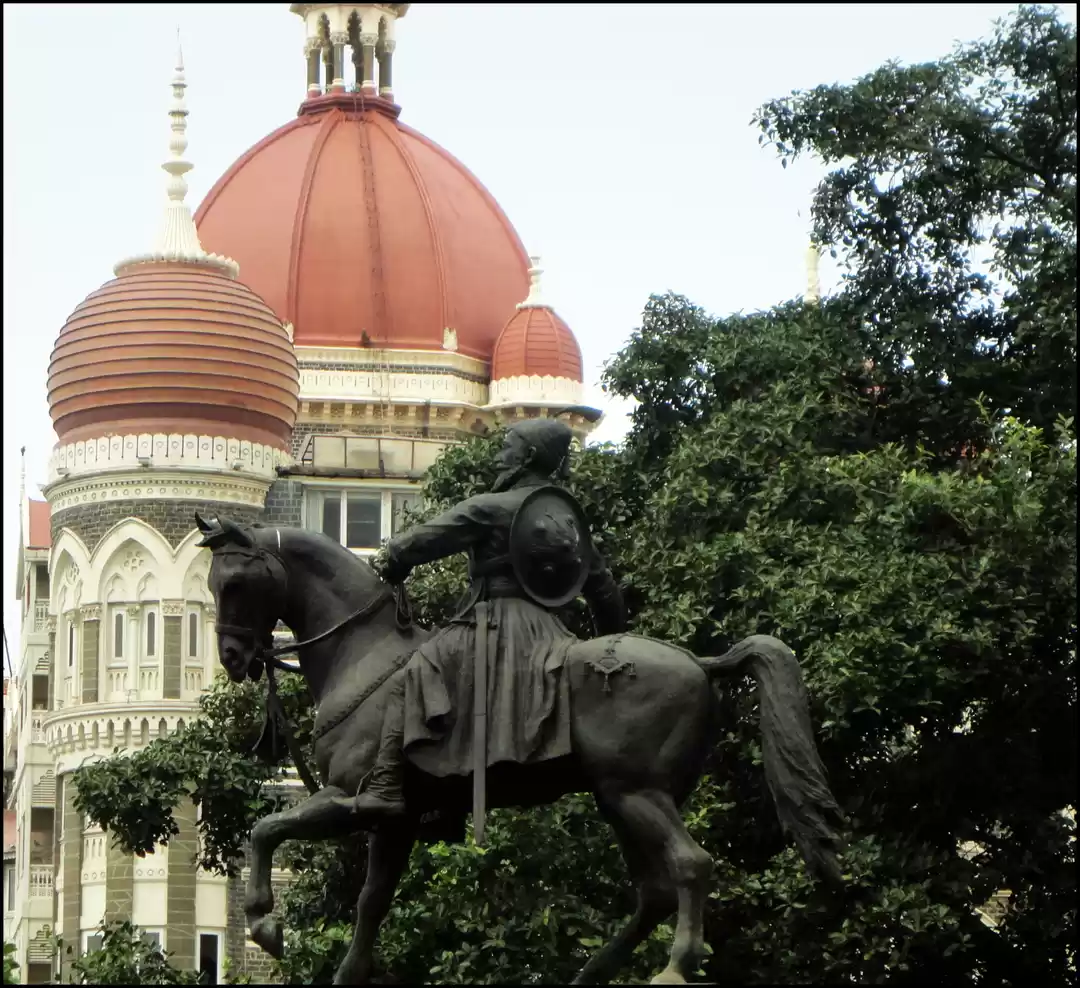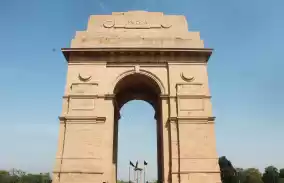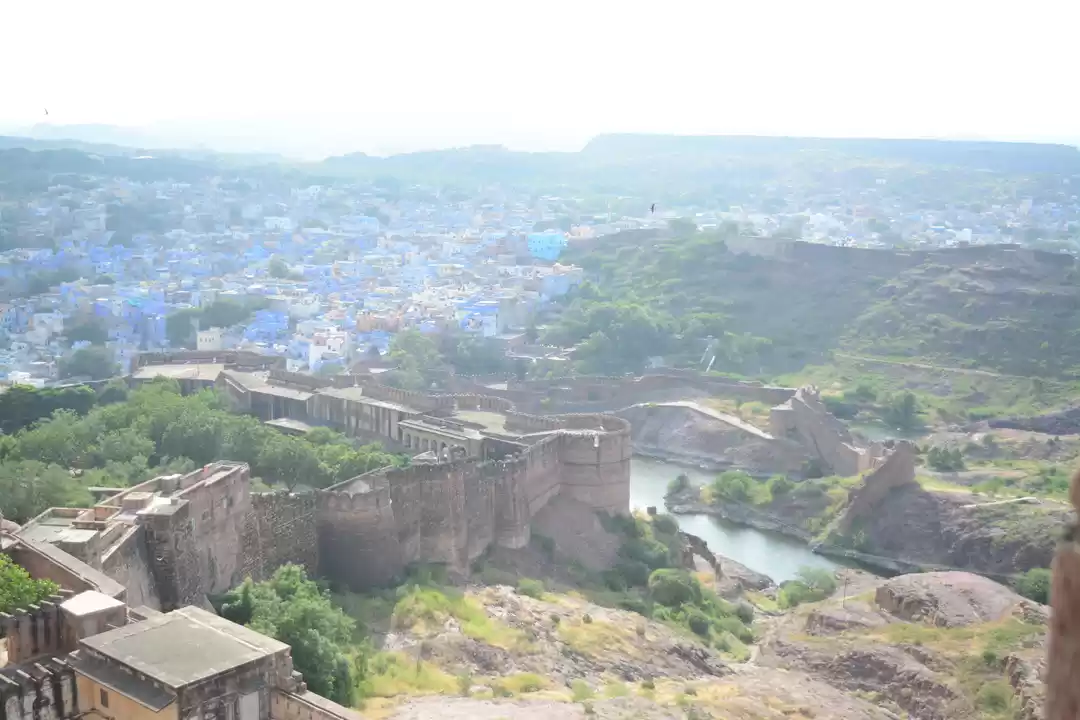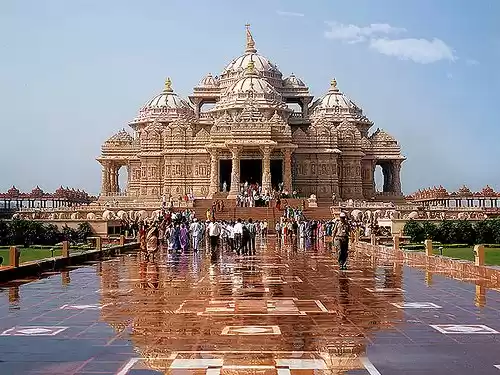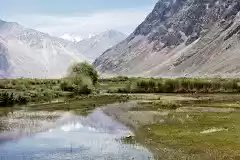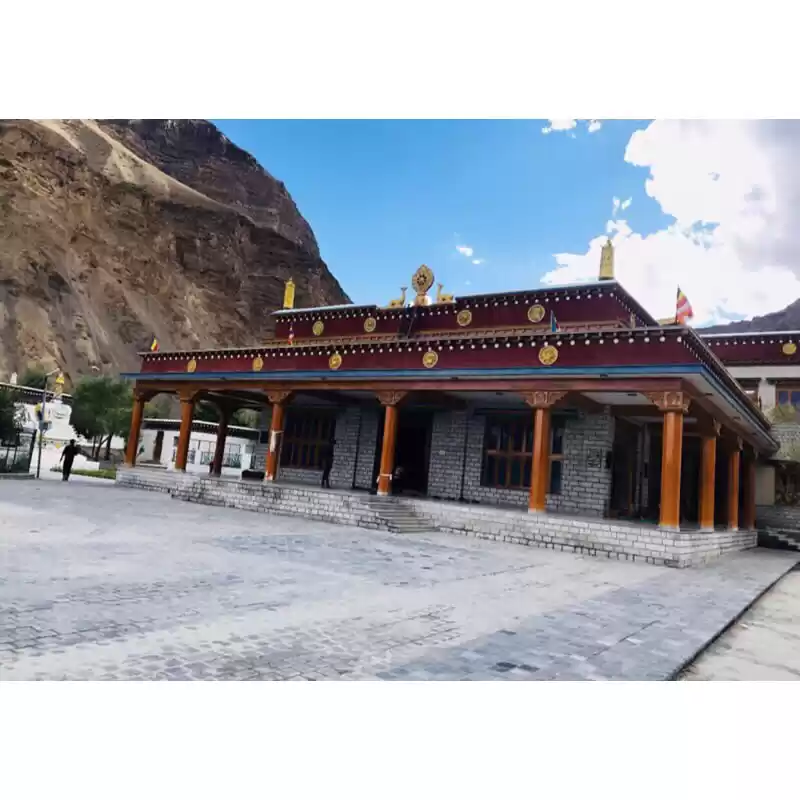Have you ever wondered what it would be like to visit a place that is older than the Taj Mahal, the Colosseum, and the Great Wall of China combined? A place that has witnessed the rise and fall of empires, the spread of Buddhism, and the evolution of art and culture. A place that is still alive and vibrant with monks, pilgrims, and tourists. That place is Tabo Monastery, one of the oldest and most sacred Buddhist sites in India.
Tabo Monastery is located in the Spiti Valley of Himachal Pradesh, a remote and rugged region that is often called the “Little Tibet” of India. It is a complex of nine temples, four stupas, 23 chortens (stupas), and various other buildings that span over 6,300 square meters. It was founded in 996 AD by Rinchen Zangpo, a legendary Tibetan translator and scholar who played a key role in reviving Buddhism in Tibet and spreading it across Asia. Tabo Monastery is considered to be the second most important Buddhist monastery after Tholing Gompa in Tibet, and has been declared a UNESCO World Heritage Site.
Tabo Monastery is not only a historical and religious treasure, but also a masterpiece of architecture and art. It showcases the Tibetan style of architecture and art with intricate murals, paintings, stuccos, and frescoes that resemble the Ajanta Caves. The monastery houses some of the finest examples of Indo-Tibetan Buddhist art, such as the statue of Vairocana, the supreme Buddha of the Mahayana tradition, surrounded by eight Bodhisattvas; the mandala of Vajradhatu, the cosmic realm of enlightenment; and the colossal statue of Maitreya, the future Buddha who will appear in this world to teach the dharma.
Tabo Monastery is also a place of festivals and ceremonies that celebrate the rich and diverse culture of Spiti Valley. The most famous festival is the Chakar festival, which is held every three years in July or August. It is a colorful and lively event that involves masked dances, ritual performances, music, and prayers. Another important ceremony is the tantric initiation ceremony, which is held every 12 years in May or June. It is a sacred and secret event that involves the display of a giant thangka (a religious painting on cloth) depicting Amitayus, the Buddha of long life.
If you are looking for an adventure that will take you back in time and immerse you in a different world, then Tabo Monastery is the perfect destination for you. In this article, we will guide you through everything you need to know about Tabo Monastery, such as how to visit, when to visit, and what to do at this remarkable destination.
How to Visit Tabo Monastery
Tabo Monastery is located in Tabo village, which is about 48 km from Kaza, the headquarters of Spiti district. The nearest airport is Bhuntar Airport near Kullu, which is about 250 km from Tabo. The nearest railway station is Joginder Nagar Railway Station near Mandi, which is about 300 km from Tabo. You can reach Tabo by road from various cities and towns in Himachal Pradesh and nearby states. Here are some of the options:

From Shimla: You can take a bus or a taxi from Shimla to Reckong Peo (about 230 km), then change to another bus or taxi to Kaza (about 200 km), then take another bus or taxi to Tabo (about 48 km). The total journey may take about 12 to 15 hours.
From Manali: You can take a bus or a taxi from Manali to Kaza (about 200 km) via Rohtang Pass and Kunzum Pass, then take another bus or taxi to Tabo (about 48 km). The total journey may take about 10 to 12 hours.
From Kullu: You can take a bus or a taxi from Kullu to Manali (about 50 km), then follow the same route as above. The total journey may take about 12 to 14 hours.
From Chandigarh: You can take a bus or a taxi from Chandigarh to Shimla (about 120 km), then follow the same route as above. The total journey may take about 15 to 18 hours.
From Delhi: You can take a bus or a train from Delhi to Chandigarh (about 250 km), then follow the same route as above. The total journey may take about 18 to 21 hours.
Some tips and suggestions for planning your trip are:
1. Book your tickets and accommodation in advance, especially during the peak season (April to October).
2. Check the weather conditions and road status before you travel, as they may change due to landslides, snowfall, or rain.
3. Carry essential items such as warm clothes, woolen socks, gloves, hats, sunglasses, sunscreen, water, snacks, medicines, etc.
4. Carry cash and documents such as identity proof, permits, etc., as there may not be ATMs or internet facilities in Tabo.
5. Respect the local culture and customs, and follow the rules and regulations of the monastery.
When to Visit Tabo Monastery
The best time to visit Tabo Monastery depends on your preference and purpose. The weather conditions and events vary throughout the year, and each season or month has its own charm and challenges. Here is a brief overview of what to expect in each season or month:

Spring (April-May):
This is the ideal time to visit Tabo Monastery if you want to enjoy the pleasant weather and the blooming flowers. The temperature ranges from 10°C to 25°C, and the precipitation is low. The roads are clear and accessible, and the views are stunning. The monastery is also less crowded and more peaceful during this time. However, you may still encounter some snowfall or rain, so be prepared for that.
Summer (June-August):
This is the peak season to visit Tabo Monastery if you want to witness the festivals and ceremonies. The temperature ranges from 15°C to 30°C, and the precipitation is moderate. The roads are open and busy, and the views are spectacular. The monastery is also more lively and vibrant during this time, as many monks, pilgrims, and tourists flock to the place. The most famous festival is the Chakar festival, which is held every three years in July or August.
It is a colorful and lively event that involves masked dances, ritual performances, music, and prayers. Another important ceremony is the tantric initiation ceremony, which is held every 12 years in May or June. It is a sacred and secret event that involves the display of a giant thangka (a religious painting on cloth) depicting Amitayus, the Buddha of long life.
Autumn (September-October):
This is another good time to visit Tabo Monastery if you want to experience the changing colors and the harvest season. The temperature ranges from 5°C to 20°C, and the precipitation is low. The roads are smooth and quiet, and the views are breathtaking. The monastery is also less crowded and more serene during this time. However, you may face some cold nights and mornings, so bring warm clothes and blankets.
Winter (November-March):
This is the off-season to visit Tabo Monastery if you want to challenge yourself and explore the snow-covered landscape. The temperature ranges from -10°C to 10°C, and the precipitation is high. The roads are closed or blocked by snow, and the views are obscured by fog or clouds. The monastery is also more isolated and frozen during this time, as most of the monks and locals migrate to lower altitudes. However, you may still find some brave souls who stay behind and practice their faith in harsh conditions.
You may like to check out: Tabo - One with the oldest monastery
Some tips and suggestions for visiting Tabo Monastery during different seasons or months are:
What to wear: Depending on the season or month, you may need different types of clothing and accessories. In general, you should wear layers of comfortable and breathable clothes that can protect you from the sun, wind, cold, and rain. You should also wear sturdy shoes or boots that can handle rough terrain and slippery surfaces. You should also bring hats, sunglasses, sunscreen, gloves, scarves, etc., as needed.
What to expect: Depending on the season or month, you may encounter different types of weather conditions and events that can affect your travel plans and experience. In general, you should be flexible and adaptable to any changes or surprises that may occur. You should also be respectful and mindful of the local culture and customs, especially during festivals and ceremonies.
What to avoid: Depending on the season or month, you may face some risks or dangers that can harm your health or safety. In general, you should avoid traveling alone or at night, drinking tap water or eating street food, taking photos without permission or touching sacred objects, etc. You should also avoid any activities that may disturb or offend the monks or locals.
What to Do at Tabo Monastery
Tabo Monastery is not just a place to see, but also a place to do. There are various attractions and activities that you can enjoy at Tabo Monastery and its surroundings that will enrich your knowledge, skills, and and emotions. Here are some of the things you can do at Tabo Monastery:

Explore the Temples and Stupas:
The main attraction of Tabo Monastery is the complex of nine temples and four stupas that showcase the history, culture, architecture, and art of this ancient monastery. You can spend hours admiring the statues, murals, paintings, stuccos, and frescoes that depict various aspects of Buddhism and Tibetan culture. You can also learn about the stories and legends behind each temple and stupa, and the people who built and preserved them. You can also join the monks in their daily prayers and rituals, and experience the spiritual atmosphere of the monastery.

Admire the Murals and Paintings:
One of the most impressive features of Tabo Monastery is the collection of murals and paintings that cover the walls and ceilings of the temples and stupas. These murals and paintings are considered to be some of the finest examples of Indo-Tibetan Buddhist art, as they combine the Indian style of Ajanta Caves with the Tibetan style of Tholing Gompa.
They depict various scenes from the life of the Buddha, the Jataka tales, the mandalas of Vairocana, Amitabha, and Akshobhya, and various deities and protectors. They also reflect the influence of different schools of Tibetan Buddhism, such as Nyingma, Kagyu, Sakya, and Gelug. You can marvel at the details, colors, and expressions of these murals and paintings, and appreciate their artistic and religious value.

Visit the Museum and Library:
If you are interested in learning more about Tabo Monastery and its history, culture, art, and literature, you can visit the museum and library that are located within the complex. The museum contains a variety of artifacts, such as sculptures, manuscripts, relics, coins, etc., that date back to different periods and dynasties. The library contains a large collection of ancient scriptures and texts that belong to different branches of Buddhism, such as sutras, tantras, commentaries, biographies, etc. You can browse through these items and gain a deeper understanding of Tabo Monastery and its significance.

Attend the Festivals and Ceremonies:
If you want to witness the festivals and ceremonies that celebrate the rich and diverse culture of Spiti Valley, you can plan your visit according to the lunar calendar. The most famous festival is the Chakar festival, which is held every three years in July or August. It is a colorful and lively event that involves masked dances, ritual performances, music, and prayers. Another important ceremony is the tantric initiation ceremony, which is held every 12 years in May or June. It is a sacred and secret event that involves the display of a giant thangka (a religious painting on cloth) depicting Amitayus, the Buddha of long life. You can also participate in other festivals and ceremonies that are held throughout the year, such as Losar (Tibetan New Year), Saga Dawa (Buddha’s birthday), Lhabab Duchen (Buddha’s descent from heaven), etc.
Meditate and Pray:
If you are looking for some peace and tranquility, you can meditate and pray at Tabo Monastery. You can find a quiet spot in one of the temples or stupas, or join the monks in their daily prayers and rituals, and experience the spiritual atmosphere of the monastery. You can also seek the blessings and guidance of the monks, who are friendly and helpful. You can also make offerings and donations to the monastery, which are used for its maintenance and development. You can also spin the prayer wheels, light the butter lamps, and recite the mantras, which are believed to bring positive energy and karma.
Trek and Camp:
If you are an adventure lover, you can trek and camp around Tabo Monastery and explore the natural beauty and diversity of Spiti Valley. You can choose from various trekking routes that range from easy to difficult, such as the Tabo-Kaza trek, the Tabo-Pin Valley trek, the Tabo-Dhankar trek, etc. You can also camp at various sites that offer stunning views of the mountains, rivers, lakes, and glaciers. You can also enjoy the starry nights and the silence of the valley.
Spot Wildlife:
If you are a wildlife enthusiast, you can spot various animals and birds that inhabit Spiti Valley. You can see some rare and endangered species, such as the snow leopard, the Himalayan brown bear, the Tibetan wolf, the blue sheep, etc. You can also see some colorful and exotic birds, such as the Himalayan griffon vulture, the golden eagle, the Tibetan snowcock, etc. You can also visit some wildlife sanctuaries and reserves that protect and conserve these species, such as the Pin Valley National Park, the Kibber Wildlife Sanctuary, etc.
Also check out: This Land Of Surreal Himalayan Desert: Tabo in Himachal Pradesh Is A Must Stop On Your Spiti Trip
Visit Other Monasteries:
If you want to explore more of the Buddhist culture and heritage of Spiti Valley, you can visit other monasteries that are located nearby Tabo Monastery. Some of the most famous ones are:

Dhankar Monastery: This is a 12th-century monastery that is perched on a cliff overlooking the confluence of the Spiti and Pin rivers. It is known for its stunning architecture and location, as well as its collection of statues, paintings, and relics.
Kye Monastery: This is a 14th-century monastery that is situated on a hilltop above Kye village. It is known for its fort-like structure and design, as well as its library of ancient scriptures and texts.
Komic Monastery: This is a 15th-century monastery that is located in Komic village, which is one of the highest villages in Asia. It is known for its simple and elegant architecture and art, as well as its mummified body of a monk named Sangha Tenzin.
Hikkim Monastery: This is a 16th-century monastery that is located in Hikkim village, which has the highest post office in the world. It is known for its peaceful and serene ambiance and atmosphere.
Tabo Monastery is a place that will leave you spellbound and awestruck by its history, culture, architecture, art, and spirituality. It is a place that will inspire you to learn more about Buddhism and Tibetan culture. It is a place that will challenge you to explore new horizons and discover new perspectives. It is a place that will make you feel alive and grateful.
If you are looking for a destination that will offer you an unforgettable experience of adventure, learning, and enlightenment, then Tabo Monastery is the place for you. Book your trip now and get ready to embark on a journey of a lifetime.
Thank you for reading this article. We hope you found it informative and helpful. If you want to learn more about Tabo Monastery or other destinations in Spiti Valley or Himachal Pradesh, please visit our website or follow us on social media.
Happy travels!







